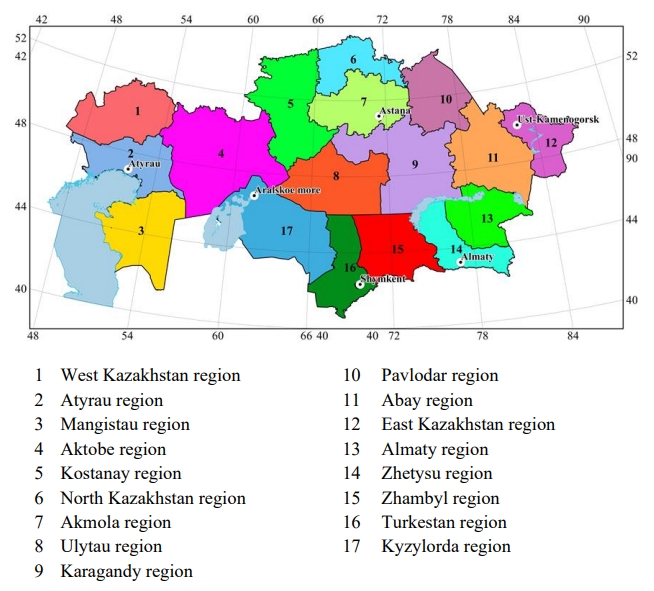The climate system is monitored by national, regional and international organizations in coordination with the world Meteorological Organization and in cooperation with other environmental programmes.
Climate is a natural resource, detailed knowledge of which is extremely important in determining the direction of development of many sectors of the economy and for ensuring the health of the population of any state. The study of the regional climate and constant monitoring of its changes is one of the priority tasks of the national hydrometeorological service of Kazakhstan RSE "Kazhydromet". Since 2010, RSE "Kazhydromet" has been issuing annual bulletins to provide reliable scientific information about the regional climate, its variability and change. Taking into account the geographical location of Kazakhstan and its vast territory, observed changes in climatic conditions in various regions of the Republic can have both negative and positive effects on biophysical systems, economic activity and social sphere. Consideration of climate conditions and assessment of their changes are necessary to determine the potential consequences and take timely and adequate adaptation measures, ultimately, to ensure the sustainable development of Kazakhstan.
Each issue of the Bulletin describes the climate conditions of a particular year, including an assessment of the extremes of temperature and precipitation regimes, and provides historical information about changes in surface air temperature and precipitation that have occurred since 1941 of the last century.
Source data. For the preparation of the Bulletin, data from the Republican hydrometeorological Fund of RSE "Kazhydromet" were used: 1) series of average monthly air temperatures and monthly precipitation amounts since 1941; 2) series of daily maximum and minimum air temperatures and daily precipitation.
Basic approaches and methods. The" norm " in the Bulletin refers to the average annual value of the climate variable under consideration for the period 1961-1990. Temperature anomalies are calculated as deviations of the observed value from the norm. Precipitation anomalies are usually considered as deviations from the norm (similar to air temperature), and as a percentage of the norm. The probability of non-exceeding characterizes the frequency (in%) of occurrence of the corresponding anomaly value in a series of observations.
Linear trend coefficients determined by the least squares method are used to estimate changes in climate characteristics over a certain time interval. A measure of trend materiality is the coefficient of determination (R2), which characterizes the contribution of the trend component to the total variance of the climate variable over the considered time period (as a percentage).
Climate indices recommended by the world meteorological organization are also used to describe the modes of surface air temperature and precipitation in a particular year and their changes over time. Some indexes are based on fixed uniform thresholds for all stations, while others are based on thresholds that may vary from station to station. In the latter case, the thresholds are defined as the corresponding percentiles of the data series. Indices allow us to evaluate many aspects of climate change, such as changes in the intensity, frequency, and duration of extremes in air temperature and precipitation.
The assessment of trends in surface air temperature and precipitation is carried out both according to the data of individual stations, and on average across the territory of 17 regions of Kazakhstan. The territory-wide average values of anomalies in meteorological variables are calculated by averaging station data on anomalies. The borders of the regions are shown on the map diagram below.

Scheme of administrative-territorial division of the Republic of Kazakhstan
The Department responsible for issuing the Bulletin is the climate research Department of the Research center.


